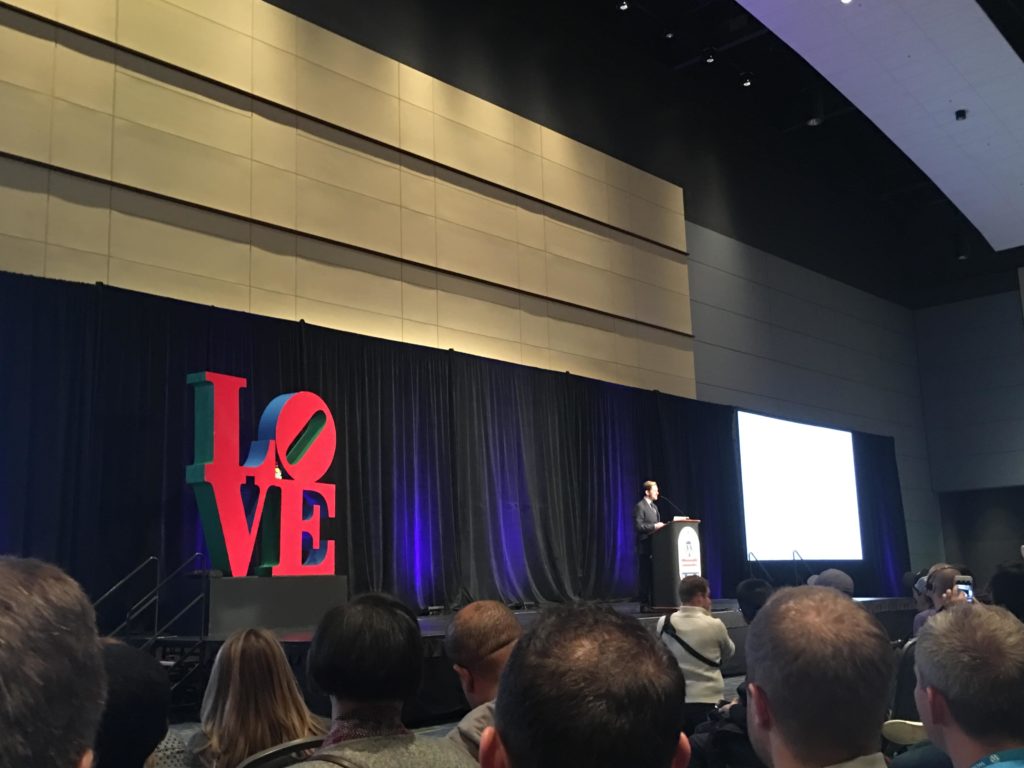
On December 1, the GreenMellen Media team flew north to Philadelphia for WordCamp US 2016 to learn firsthand from WordPress experts from around the globe. After two days of hearing presentations, meeting with sponsors and learning from other WordPress geeks like us, we got to listen to WordPress founder Mark Mullenweg address all the success from this past year and the upcoming plans for WordPress in 2017.
Didn’t get a chance to see the live stream or make it to Philly? Check out our recap below.
Impressive Statistics
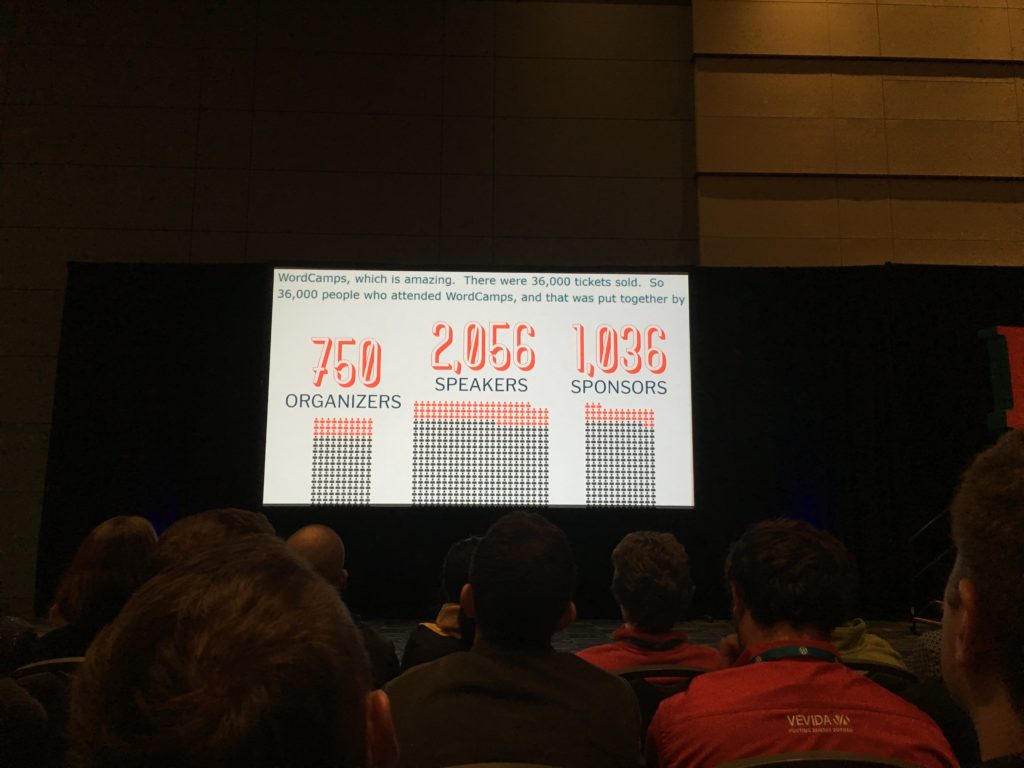
2016 was a great year for WordPress, especially in the area of education and contribution toward learning more about it. Just this year alone, there were 115 WordCamps in 41 countries and almost 3,200 Meetups with over 62,500 attendees in 58 countries around the world. This was a 20% increase in the past year!
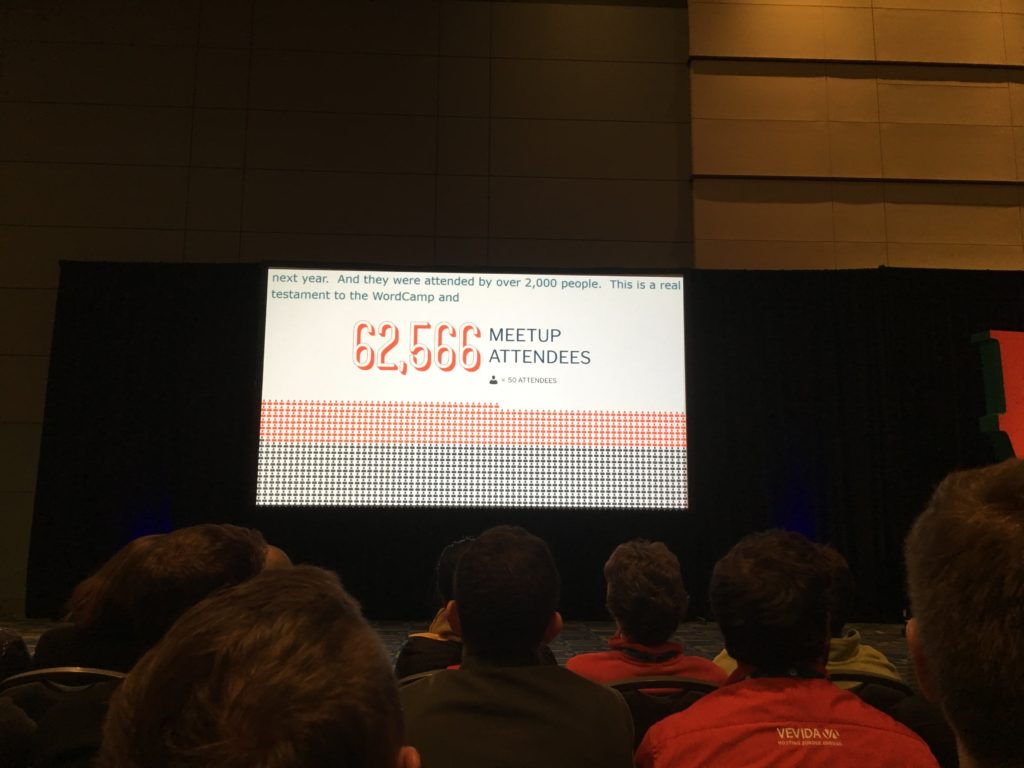
Some other impressive stats include a 20% increase in average plugin usage and a 34% increase in plugin downloads. Matt credited this driver to internationalization, which was another huge highlight in WordPress’s 2016 success. The top 10 plugins for WordPress websites are now 82% complete in the top 12 languages, and almost 1,600 plugins and 230 themes come with language packs.
While WordPress.tv publishes about 26% of all WordPress talks, there is now an official YouTube WordPress channel. This allows more videos to be available wherever people want to watch them.
One stat that didn’t change much from last year was the amount of WordPress websites on Javascript, which was a 2016 goal addressed in 2015. Around 28% of each WordPress website uses Javascript, and this will hopefully be something the WordPress community can learn deeply throughout the next 365 days. According to Mr. Mullenweg, “Moving to Javascript is key to evolution of WordPress to go from page-based to true application.”
Hitting More Milestones
The WordPress foundation made $4.3 million in revenue (up from $2.8 million in 2015), and 99.9% of this came from WordCamps.
Some special announcements included their efforts to support like-minded nonprofits such as Hack the Hood and Black Girls Code, run education workshops in underdeveloped countries, and promote hack-a-thons to help build websites for non-profits and NGOs.
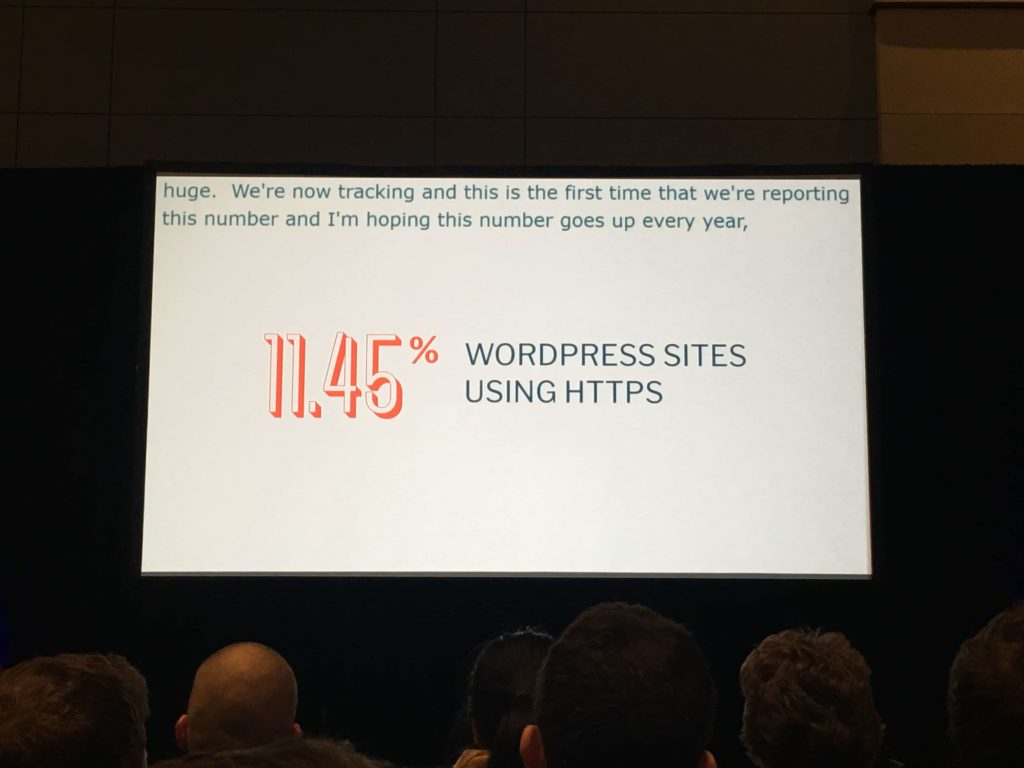
For you techies, here are some notable facts from Matt. 11.45% WordPress-powered websites are now using HTTPS, which allows for certain features to be available if your website is encrypted (this is expected to increase over the next year). WordPress is also now 100% on PHP 7. Calypso was a big word from the State of the Word, as Matt said this is the future of what the WordPress interface will be. Calypso is now plugin aware, and it’s open to plugins with over one million active sites.
Unveiling 4.7 Vaughan
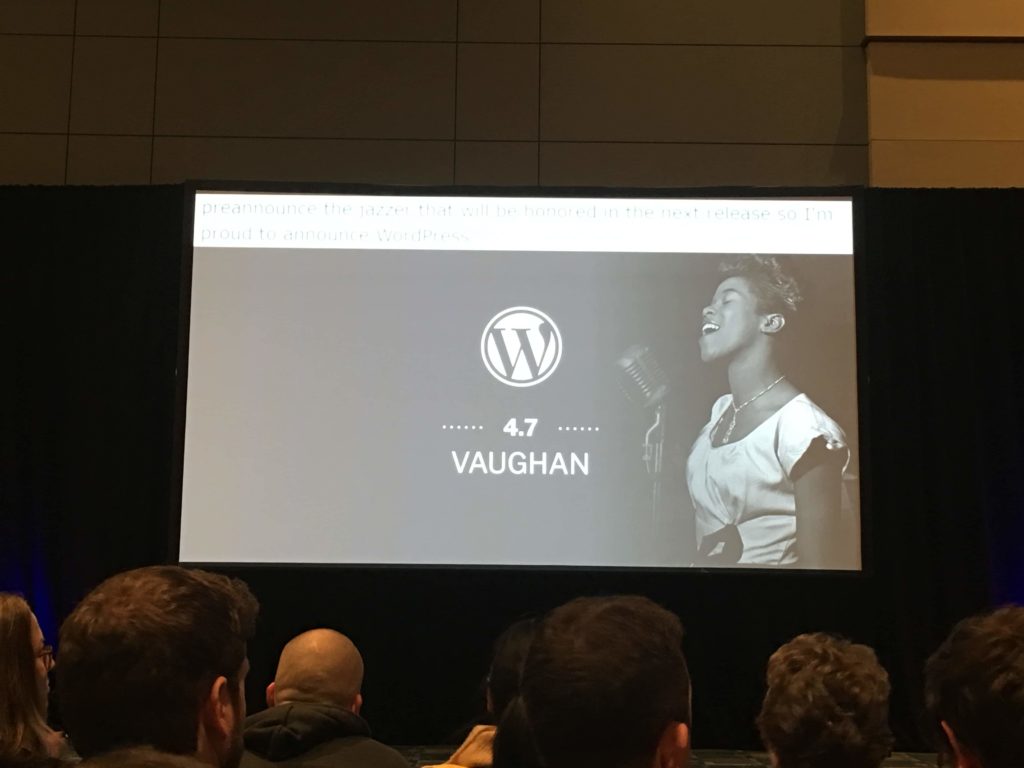
While we knew that WordPress 4.7 would be released early December, it was confirmed that it would be available on Tuesday, December 6. What we didn’t know was the jazz artist it would be named after, which was jazz singer Sarah “Sassy” Vaughan. Needless to say, we had a lot to look forward to with this new release.
The new default theme is Twenty Seventeen, which is targeted toward businesses and designed to make “your site your way.” The coolest features of Twenty Seventeen include a multi-section front page, header videos and real-time edit shortcuts. Better menu building allows users to add new pages when writing a post, and custom CSS permits live previewing of changes. PDF thumbnail previews and user admin languages were other features coming out with this updated version, but there were lots of “ooohs” and “ahhhhs” from developers when WP Rest API was mentioned. We cannot wait to update our managed websites with this update and try out these features for ourselves!
Coming in 2017
This upcoming year is going to be a whole new ballgame for WordPress. Matt stated that it’s time for a new structure for WordPress releases. This past year, there was a patterned schedule of when new major releases were made available, and 2017 will not have any set releases. From now on, these three areas will become the main focus and be perfected before a new release can be available:
- API – WordPress must measure the output over the input.
- Editor – They will strive to unify widgets and interface for short codes.
- Customizer – We hope to continue to improve the customizer.
Hopefully, WordPress 2017 will bring the community a simplified UX, more power for developers, “have design lead the way” and a more-efficient core.
As Matt said before he recited a poem by Elizabeth Alexander to end the presentation, we need to get back in touch with our poetic side. Let’s hope 2017 is the year of Shel Silverstein (or whatever your favorite poet is…we love “Oh, I’m Being Eaten by a Boa Constrictor”).
